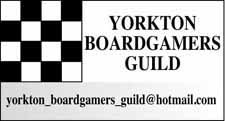When it comes to backyard games for the summer one which sometimes gets overlooked is croquet.
It is somewhat surprising a game with the long history of croquet now seems to lag behind other new games such as washers.
If anyone questions how competitive croquet can be, at the 1900 Summer Olympics, three croquet events were contested.
Certainly when looking at history, croquet's is rather stories.
"The oldest document to bear the word croquet' with a description of the modern game is the set of rules registered by Isaac Spratt in November 1856 with the Stationers' Company in London. "The first explanation is that the ancestral game was introduced to Britain from France during the reign of Charles II of England, and was played under the name of paille-maille or pall mall, derived ultimately from Latin words for "ball and mallet". This was the explanation given in the ninth edition of Encyclopaedia Britannica, dated 1877. In his 1810 book entitled The Sports and Pastimes of the People of England, Joseph Strutt describes the way pall mall was played in England in the early 17th century: "Pale-maille is a game wherein a round box ball is struck with a mallet through a high arch of iron, which he that can do at the fewest blows, or at the number agreed upon, wins. It is to be observed, that there are two of these arches, that is one at either end of the alley. The game of mall was a fashionable amusement in the reign of Charles the Second, and the walk in Saint James's Park, now called the Mall, received its name from having been appropriated to the purpose of playing at mall, where Charles himself and his courtiers frequently exercised themselves in the practice of this pastime.'
"The second theory is that the rules of the modern game of croquet arrived from Ireland during the 1850s, perhaps after being brought there from Brittany where a similar game was played on the beaches. Records show the similar game of "crookey" being played at Castlebellingham in 1834, which was introduced to Galway in 1835 and played on the bishop's palace garden, and in the same year to the genteel Dublin suburb of Kingstown (today Dún Laoghaire) where it was first spelt as 'croquet'."
Not surprisingly there are varying versions of croquet.
"In the American game, roqueting a ball out of bounds or running a hoop out of bounds causes the turn to end, and balls that go out of bounds are replaced only nine inches from the boundary rather than a yard as in association croquet. 'Attacking' balls on the boundary line to bring them into play is thus far more challenging."
And a version more people may know; "Nine-wicket croquet, sometimes called "backyard croquet", is played mainly in the United States, and is the game most American casual players call simply "croquet". This version of croquet varies from six-wicket croquet in that there are nine wickets, two stakes, and players usually compete individually with a single ball, with up to six players competing. The course is arranged in a double-diamond pattern, with one stake at each end of the course. Players must navigate one side of the double diamond, hit the stake, then navigate the opposite side of the double diamond and hit the starting stake to win the game.
"Unlike six-wicket croquet, where each time a ball is roqueted a croquet shot must be taken, players have four options after roqueting another ball. These reflect the more individual aspect of nine-wicket croquet."
Like many games croquet, or at least the equipment for croquet, have been adapted into a number of other sports.
My personal favourite croquet adaptation is Crolf, yes the marriage of croquet with golf. There are versions using special, longer, heavier mallets, pushing the distance to the wicket target up to 30-metres, and another using the more basic croquet set and using the garden course to create the challenges. One example is at www.crolf.co.uk
This is one that would make ideal sense with some flower pots and beds, sculptures, and rocks to create challenges for a course along the Brodie Street Redevelopment here in the city.
It would provide another active opportunity, with low initial costs for City and players, and low maintenance for City crews once created.
You can learn more about croquet as a sport/recreation at www.croquetamerica.com
Also for more information visit www.croquet.ca/
If anyone is interested feel free to contact [email protected]




